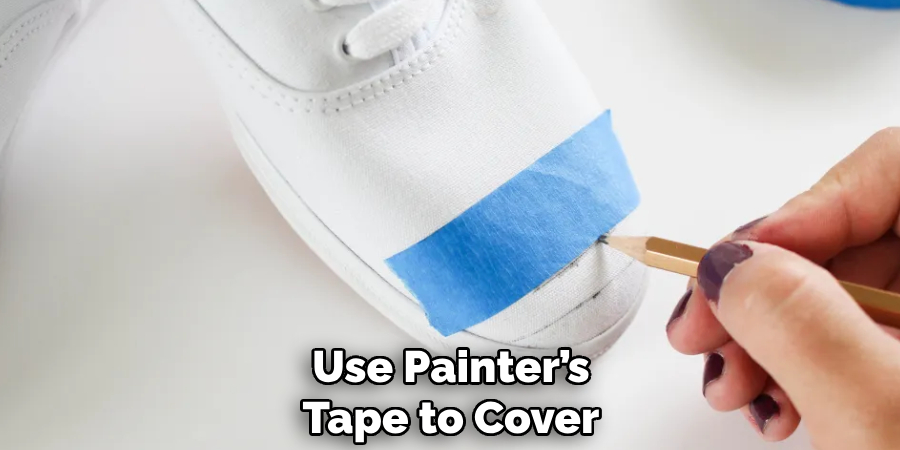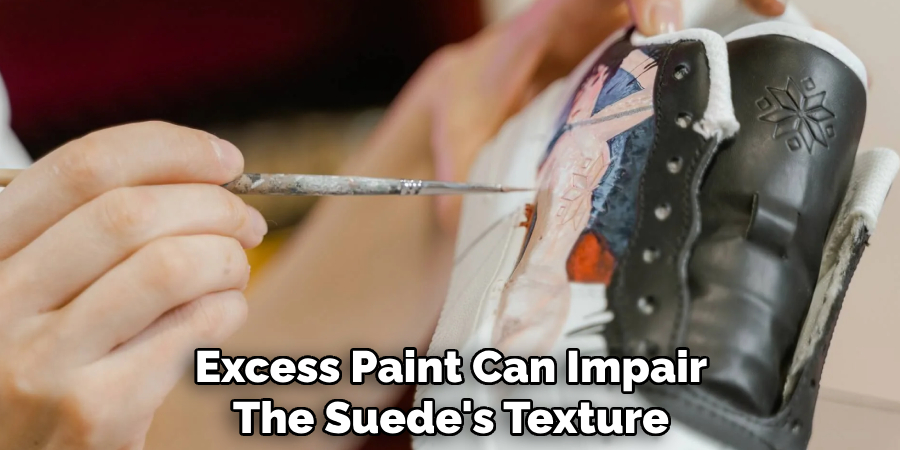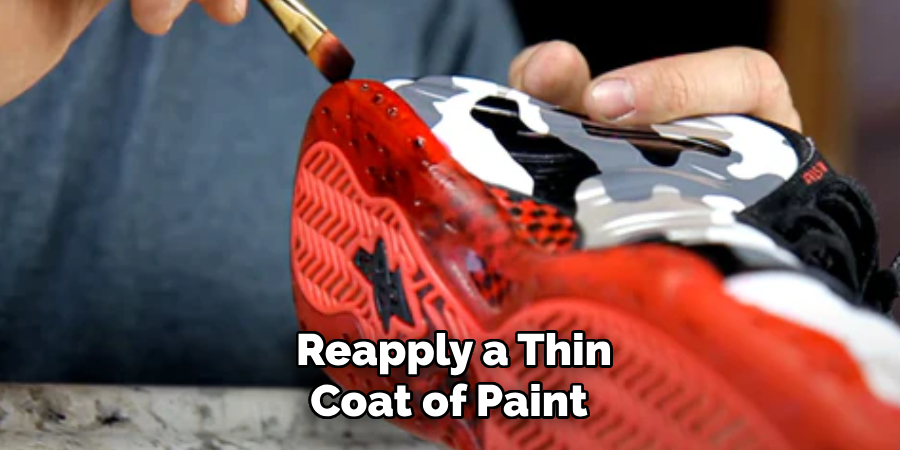Suede shoes are cherished for their luxurious and delicate texture, making them a stylish addition to any wardrobe. However, their soft and porous material requires special care to maintain their appearance and durability.

Over time, suede shoes can fade, develop stains, or lose their vibrancy due to daily wear and exposure to the elements. Repainting suede shoes is an excellent way to breathe new life into them by restoring their original color, covering blemishes, and ultimately extending their lifespan. It’s a cost-effective and creative method to refresh your favorite pair without compromising their quality.
This article is designed to serve as a comprehensive guide on how to repaint suede shoes, offering step-by-step instructions, essential tools, and expert tips to achieve the best results. Whether you want to revamp a classic pair or add a personal touch, this guide will help you transform your suede shoes confidently and easily.
Preparing Suede Shoes for Repainting
Cleaning the Shoes
Before repainting suede shoes, it’s essential to ensure they are thoroughly cleaned. Cleaning removes dirt, grime, and oils that can interfere with paint adhesion, ensuring a smooth and even finish. Start using a suede brush to scrub away any surface dust and debris gently. A suede eraser can help lift tougher stains or scuff marks without damaging the material.
Avoid using harsh chemicals, as they may harm the delicate texture of suede. Consider using a specialized suede cleaner for deeper cleaning, following the manufacturer’s instructions carefully. This step will prepare the surface for optimal paint application while preserving the quality of the suede.
Drying the Shoes
Once cleaned, allowing the shoes to dry completely before moving on to the repainting process is crucial. Damp suede can prevent the paint from bonding properly and may lead to uneven results. Allow the shoes to air dry naturally in a well-ventilated area, away from direct heat or sunlight that could damage the material. Alternatively, use a soft cloth to dab away excess moisture for quicker drying, gently. Ensuring a dry surface will help achieve the best possible finish.
Protecting the Surrounding Areas
Before you begin painting, take steps to protect the parts of the shoes you don’t want to paint, such as the soles or non-suede accents. Use painter’s tape to cover these areas carefully, ensuring precise coverage. This will prevent accidental spills or smudges, helping you achieve a professional look. Taking the time to prepare properly will make the repainting process smoother and more effective.

Choosing the Right Paint for Suede
When repainting suede shoes, selecting the proper paint is essential to ensure a flawless and long-lasting finish.
Types of Paint for Suede
The best options are suede-specific paints, which are designed to work with the delicate texture of suede. Water-based suede dyes and sprays are excellent choices because they penetrate the material, ensuring vibrant and even coverage without stiffening the fabric. These products maintain the natural softness of suede, keeping your shoes comfortable to wear. On the other hand, avoid using traditional acrylic paints, as they can damage the suede’s texture and result in cracking or flaking over time.
Color Selection
Choosing the right color is key to achieving the desired look. Decide whether you want to match the original shade of the shoes or go for a bold transformation. For the best results, always test the paint on a small, inconspicuous area first to ensure compatibility and check how the color appears once dry. This step can prevent disappointing surprises and costly mistakes.
Additional Products
After painting, consider applying a suede protector or sealer. These products create a protective barrier, reducing the likelihood of scuffs, fading, or water damage. Proper sealing also helps preserve the intensity of the new color and prolongs the life of your repainted suede shoes, keeping them looking fresh for longer.
Step-by-Step Guide: How to Repaint Suede Shoes
Step 1: Applying the Paint
To begin repainting your suede shoes, use a suitable technique for applying suede paint. A soft brush, sponge, or spray applicator can all work well, depending on your preference and the specifics of the paint product. Start by applying thin, even coats to ensure proper adhesion and coverage. Avoid using thick layers, as this can cause the paint to crack or clump.
Begin at the seams or less visible areas to test the paint application and observe how the suede reacts to the paint. This step ensures you are satisfied with the texture and finish before proceeding to more prominent sections.
Step 2: Drying Between Coats
Proper drying time between coats is essential for achieving a professional look. Allow the paint to dry for about 20-30 minutes before applying additional layers. This interval ensures that the paint sets properly and prevents over-saturation. Excess paint can impair the suede’s texture and create uneven patches, so patience is essential during this process. Monitor the surface carefully for any areas requiring an extra touch-up before moving on.

Step 3: Final Touches
After achieving the desired color and coverage, apply a final coat to smooth out any inconsistencies and create a polished finish. Once the paint is fully dry, gently brush the suede using a suede brush to restore its natural texture. This final step will enhance the material’s softness and ensure the paint seamlessly integrates with the fabric, leaving your suede shoes looking vibrant and refreshed.
Fixing Common Issues When Repainting Suede Shoes
Uneven Coverage
Uneven paint coverage can affect the final look of your suede shoes. To address this, allow the paint to dry completely and then gently sand the uneven areas using fine-grit sandpaper. This will smooth out the surface without damaging the suede. After sanding, apply another thin coat of paint, ensuring even strokes and light pressure to correct inconsistencies. Allow the new layer to dry fully before continuing.
Streaks and Brush Marks
Streaks or brush marks may appear if the paint is applied unevenly or with the wrong tools. To fix this, use a clean sponge or a soft-bristled brush to gently smooth out the streaked areas while the paint is still wet. If the paint has dried, you can lightly sand the area and reapply a thin coat of paint with smooth, even strokes. Using high-quality tools helps achieve a professional finish.

Over-Painting and Stiffness
Over-painting can make the suede stiff, diminishing its softness and flexibility. To prevent this, always use light, even coats, and avoid excessive paint application. If stiffness occurs, allow the shoes to dry completely and then carefully use a suede brush to restore the texture. Regularly brushing the suede after it dries can help maintain its natural softness and ensure a fresh, vibrant finish.
Protecting Repainted Suede Shoes
Using a Suede Protector
After repainting your suede shoes, applying a suede protector spray is essential to maintain the finish and shield them from stains and water damage. A good quality suede protector creates an invisible barrier that repels dirt and moisture, ensuring your shoes stay fresh longer. To apply the protector, ensure the shoes are clean and completely dry. Hold the spray at least six to eight inches from the shoe and coat evenly, avoiding heavy application in one area to prevent damage to the paint job. Allow the spray to dry thoroughly before wearing the shoes.
Regular Maintenance
Caring for your suede shoes regularly enhances their lifespan and keeps them looking fresh. Use a suede brush to remove dirt and restore the nap after each use gently. Clean spills immediately with a soft cloth or sponge and avoid using excessive water, as moisture may damage the suede. Additionally, keep the shoes out of direct sunlight to prevent fading and discoloration.
Storage Tips
Proper storage is key to preserving both the paint and the texture of suede shoes. Use shoe trees or stuff the shoes with tissue paper to maintain their shape and prevent creasing. Store them in a cool, dry place away from humidity and sunlight to avoid cracking or fading of the paint. A dust bag or shoebox can provide additional protection against dirt and moisture.

When Not to Repaint Suede Shoes
When considering whether to repaint suede shoes, there are situations where it may not be the best option.
Severe Damage
Repainting is not effective when dealing with large scuffs, rips, or deep stains that compromise the integrity of the material. Such damage can make it difficult for the paint to adhere properly, resulting in uneven coverage or further deterioration of the suede.
Wear and Tear
Excessive wear, such as thinning suede or structural damage, may indicate that it’s time to replace the shoes rather than repaint them. Repainting in these cases may temporarily improve the appearance, but it won’t resolve underlying issues that affect the durability and functionality of the shoes.
Alternative Solutions
For shoes that are too damaged to repaint but still hold sentimental or monetary value, consider seeking professional suede restoration services. Experts in suede care may be able to repair and rejuvenate the shoes using specialized techniques far beyond what DIY methods can achieve.
Common Mistakes to Avoid
Using the Wrong Paint
Using the wrong type of paint can severely damage your suede shoes. Suede is a delicate material, and standard acrylic or generic fabric paints can cause it to lose its softness and signature texture. It’s essential to use suede-specific paints, designed to penetrate the material evenly without altering its natural feel.
Over-Saturating the Suede
Applying too much paint in one area can lead to over-saturation, making the suede stiff and unnatural-looking. This can ruin the shoe’s appearance and feel, as suede should remain soft and flexible. Use light, even coats and allow each layer to dry before applying more for the best results.
Skipping the Cleaning Process
Failing to clean suede shoes thoroughly before repainting is a common mistake. Dirt, oil, and debris can prevent the paint from adhering properly, leading to chipping or uneven coverage. Always clean the shoes using a suede brush or cleaner to create a smooth surface for painting.
Not Testing Paint on a Small Area
Skipping a test patch can lead to disastrous results. Suede reacts differently to various paints, so it’s crucial to test the paint on a small, hidden area before applying it to the entire shoe. This step helps ensure the color, texture, and finish meet your expectations before committing to a full repaint.

Conclusion
Learning how to repaint suede shoes effectively follows a few key steps. Begin with thorough cleaning to remove any dirt and debris, ensuring a smooth surface for paint application. Choose the right type of paint specifically designed for suede materials, and always test it on a small, hidden area first.
Apply the paint in thin coats, allowing each layer to dry fully before adding more, to avoid over-saturation. Finally, protect the finished product with a suede protector to maintain its look. With proper care and ongoing maintenance, your suede shoes will stay fresh and stylish for much longer.


